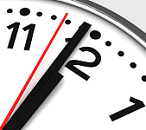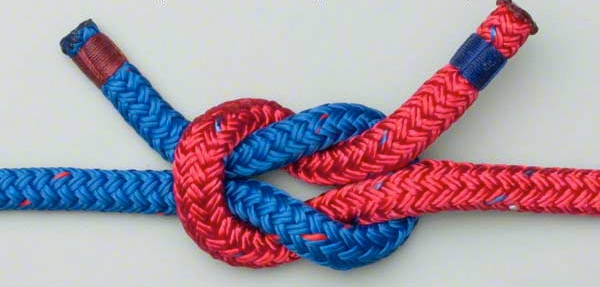SaaS businesses develop intimate, long term relationships with their SaaS customers. Keeping that relationship positive and aligned over the years is a real challenge. In fact, many public SaaS companies have yet to turn a profit. If they don’t keep their customers around for years, then all that capital invested in customer acquisition will have gone to waste.
This is the third post in a series that explores the importance of SaaS customer alignment across the SaaS customer lifecycle. The last post examined the challenges of aligning SaaS customer acquisition, resulting in a short a list of SaaS Customer Alignment Tips. This post continues the list of tips into the second half of the SaaS customer lifecycle by examining the challenges of aligning SaaS customer success.
Churn Starts on Day One
It is typical in B2B software for customer acquisition to eat up 50% or more of total costs. In traditional licensed software, that cost is immediately recovered when a deal is closed by the revenue of the deal. There is very little uncertainty about the value of any new contract: it is the margin reaped between license revenue and acquisition costs. In SaaS, however, customer acquisition costs are recovered over time as the customer renews each period. There is a great deal of uncertainty about the value of any new contract, because the customer might cancel early or stick around for years.

The economics of a SaaS contract are like that of buying a stock or a bond, where you make an up front investment based on the promise of future returns. As the future unfolds, the value of that investment has little correlation to the price that you paid. It is determined by how effectively the underlying business manages its future. In SaaS, the work doesn’t end when then deal it is signed. It begins, because churn starts on day one.
SaaS Customer Alignment Tip #7
Don’t Fumble Your Handoffs
 Separating hunters and farmers is a common SaaS sales best practice. Deals are closed by an aggressive quota-carrying sales team: the hunters, and then handed over to a more service oriented group of account managers and customer success reps for on-boarding, renewals and up-sell: the farmers. Your SaaS customer has only one SaaS customer life cycle. Every time you hand-off a SaaS customer relationship, you create the opportunity for that SaaS customer to fall through the cracks in your process. When you break up responsibility for the SaaS customer life cycle, you must put processes in place that sew it back together. It might be as simple as an onboarding checklist and a formal meeting with all the relevant parties. Or, you might create teams that link specific sales reps to specific account managers and success reps. Use whatever approach works best for your particular SaaS business, but don’t fumble your hand-offs.
Separating hunters and farmers is a common SaaS sales best practice. Deals are closed by an aggressive quota-carrying sales team: the hunters, and then handed over to a more service oriented group of account managers and customer success reps for on-boarding, renewals and up-sell: the farmers. Your SaaS customer has only one SaaS customer life cycle. Every time you hand-off a SaaS customer relationship, you create the opportunity for that SaaS customer to fall through the cracks in your process. When you break up responsibility for the SaaS customer life cycle, you must put processes in place that sew it back together. It might be as simple as an onboarding checklist and a formal meeting with all the relevant parties. Or, you might create teams that link specific sales reps to specific account managers and success reps. Use whatever approach works best for your particular SaaS business, but don’t fumble your hand-offs.
SaaS Customer Alignment Tip #8
Onboard in Real Time
 Sales, marketing, customer success, and technical support teams all play critical roles in servicing SaaS customers and driving SaaS business revenue. However, they should always be considered the second choice when the same goal can be accomplished directly by innovative SaaS product design. As much as we love our teams, they don’t have economies of scale. More importantly, they are not in front of the customer when the customer needs help with the product. The SaaS product is. Oboarding is best when it is done in real-time as the the SaaS customer uses the SaaS product. Build your SaaS products to detect and react to the needs of the SaaS customers based on their experience and usage. Don’t clutter up the user interface with advanced features for first time users. Strive for instant gratification. Design for discovery to expose deeper capabilities based on deeper usage. When all else fails, provide ques, tips, education and immediate access to support within the product itself.
Sales, marketing, customer success, and technical support teams all play critical roles in servicing SaaS customers and driving SaaS business revenue. However, they should always be considered the second choice when the same goal can be accomplished directly by innovative SaaS product design. As much as we love our teams, they don’t have economies of scale. More importantly, they are not in front of the customer when the customer needs help with the product. The SaaS product is. Oboarding is best when it is done in real-time as the the SaaS customer uses the SaaS product. Build your SaaS products to detect and react to the needs of the SaaS customers based on their experience and usage. Don’t clutter up the user interface with advanced features for first time users. Strive for instant gratification. Design for discovery to expose deeper capabilities based on deeper usage. When all else fails, provide ques, tips, education and immediate access to support within the product itself.
If They Use It, They Will Stay
There are many potential causes of SaaS churn. SaaS products that don’t deliver enough value to justify their use. SaaS products that are so hard to use, such that SaaS customers never really get up and running. SaaS products that are so casually used that SaaS customers don’t incur any switching costs. Or, SaaS customers that simply go out of business. Whatever the root cause of SaaS churn, its impact is always measured by use. They might not come if you build it, but if they use it, they will stay.
Its a bit of a tautology to claim that SaaS product usage is the best predictor of SaaS churn. In one sense, churn is simply non-use. Over time, however, SaaS product use tends to deepen switching costs as SaaS customers put more and more of their data into the SaaS product, invest more of their time learning the SaaS product and bake the SaaS product into their business processes. The cumulative impact of ongoing SaaS product use creates an economic hysteresis that makes it easier to go forward and renew, than to go backward and churn.
SaaS Customer Alignment Tip #9
Use Your Usage Data
 SaaS product usage patterns provide unprecedented insight into SaaS customer alignment. Well aligned SaaS customers get up and running fast, use your SaaS product on a regular basis, discover new capabilities in the course of regular use, and expand their use over time. Only SaaS products offer this level of customer intelligence. Many other products from vending machines to automobiles embed SaaS-like components for the sole purpose of obtaining this kind of information. Use your usage data to gain a deeper understanding of your SaaS customer’s needs and habits to improve SaaS customer alignment.
SaaS product usage patterns provide unprecedented insight into SaaS customer alignment. Well aligned SaaS customers get up and running fast, use your SaaS product on a regular basis, discover new capabilities in the course of regular use, and expand their use over time. Only SaaS products offer this level of customer intelligence. Many other products from vending machines to automobiles embed SaaS-like components for the sole purpose of obtaining this kind of information. Use your usage data to gain a deeper understanding of your SaaS customer’s needs and habits to improve SaaS customer alignment.
SaaS Customer Alignment Tip #10
Qualify Churn like You Qualify Leads
 SaaS sales and marketing organizations spend an enormous amount of time and energy qualifying leads. They track conversion rates, create A/B tests, develop lead scores, put lead development teams in place, and so on. Lead qualification increases the probability of closing a deal and enables the SaaS sales and marketing organizations to focus on the best prospects. So it is with churn. Churn is just negative retention, and retention is revenue. Whereas lead scoring models are built on weak, superficial metrics for SaaS customer intent, such as click streams and page views, SaaS customer success models can be built clear indicators such as product usage, support tickets, and direct customer feedback. If you can qualify your current customers likelihood of cancelling better than you qualify leads, then you will have developed a significant advantage in the never-ending battle against SaaS churn.
SaaS sales and marketing organizations spend an enormous amount of time and energy qualifying leads. They track conversion rates, create A/B tests, develop lead scores, put lead development teams in place, and so on. Lead qualification increases the probability of closing a deal and enables the SaaS sales and marketing organizations to focus on the best prospects. So it is with churn. Churn is just negative retention, and retention is revenue. Whereas lead scoring models are built on weak, superficial metrics for SaaS customer intent, such as click streams and page views, SaaS customer success models can be built clear indicators such as product usage, support tickets, and direct customer feedback. If you can qualify your current customers likelihood of cancelling better than you qualify leads, then you will have developed a significant advantage in the never-ending battle against SaaS churn.
Help Your SaaS Customers Help Themselves
There is no market for lemons in SaaS. SaaS customers gain a complete understanding of your SaaS product before they pay you. If they don’t like what they see, they churn. On the other hand, the SaaS business incurs the same customer acquisition costs. If your SaaS sales and marketing machine is too aggressive, your reps may make quota, but your SaaS business will pay for it in the end. Many enterprise software vendors pay lip service to solution selling, but SaaS vendors must deliver. The only sure way to build a sustainable, recurring SaaS revenue stream is to help your SaaS customers help themselves.
SaaS Customer Alignment Tip #11
Avoid The Downside of Upsells
 Upselling is a critical component of many SaaS business strategies. For some SaaS businesses, long term profitability hinges on upsells. The importance of upsell revenue and retention revenue lead many SaaS executives to the natural conclusion that these revenue streams should be on quota to get the same level of individual motivation and accountability that sales has for new revenue. Putting account managers and success reps on aggressive quotas, however, is a double edged sword. Bad cops can’t be good cops.
Upselling is a critical component of many SaaS business strategies. For some SaaS businesses, long term profitability hinges on upsells. The importance of upsell revenue and retention revenue lead many SaaS executives to the natural conclusion that these revenue streams should be on quota to get the same level of individual motivation and accountability that sales has for new revenue. Putting account managers and success reps on aggressive quotas, however, is a double edged sword. Bad cops can’t be good cops.
A lost deal only implies an opportunity cost: revenue we might have had. Unlike new business, a lost customer is a real cost: revenue you would have had. If your upsell effort is so aggressive that it creates bad SaaS customer alignment, they your cancellations might very well cancel out your upsells. Avoiding the downside of upsells requires striking a careful balance between revenue accountability and customer success. In that regard, culture matters more than quotas. Make sure your SaaS customers are successful first, and your upsells will sell themselves.
SaaS Customer Alignment Tip #12
Advocacy Compounds Lifetime Value
 A SaaS customer that upgrades can easily be worth 2X one that doesn’t. A SaaS customer that brings your new SaaS customer, each of which might upgrade, can easily be worth 10X. The best SaaS customer advocates do more than provide logos for your website and quotes for your press releases. They recommend you to their colleagues and bring in new business at a fraction of your average acquisition cost.
A SaaS customer that upgrades can easily be worth 2X one that doesn’t. A SaaS customer that brings your new SaaS customer, each of which might upgrade, can easily be worth 10X. The best SaaS customer advocates do more than provide logos for your website and quotes for your press releases. They recommend you to their colleagues and bring in new business at a fraction of your average acquisition cost.
Smart SaaS businesses put in place ongoing programs that identify, nurture and enable SaaS customer advocates, because the lifetime value of a SaaS customer advocate compounds with each referral. But remember, your SaaS customer advocate is not helping you. You have been paid for your services. She is helping the colleague she refers to you, because she thinks your SaaS product is genuinely valuable. And, she is helping herself to the good feeling of doing a colleague a favor. Help her, help her friends, and help her, help herself.

[…] you like your education to come in the form of tips, then read Aligning SaaS Customer Success by Joel York. You’ll get tips on onboarding (“onboarding is best when it is done in […]
[…] you like your education to come in the form of tips, then read Aligning SaaS Customer Success by Joel York. You’ll get tips on onboarding (“onboarding is best when it is done in […]
[…] of your SaaS product than they will in front of you. Don’t waste it. In the same spirit as SaaS Customer Alignment Tip #8, the best time to get SaaS customer feedback is […]
[…] Upselling the SaaS product is a tricky yet essential element of SaaS business selling strategy. The long term profitability and revenue growth of SaaS companies lies in the upselling model. […]
[…] front of your SaaS product than they will in front of you. Don’t waste it. In the same spirit as SaaS Customer Alignment Tip #8, the best time to get SaaS customer feedback is […]
[…] you like your education to come in the form of tips, then read Aligning SaaS Customer Success by Joel York. You’ll get tips on onboarding (“onboarding is best when it is done in […]